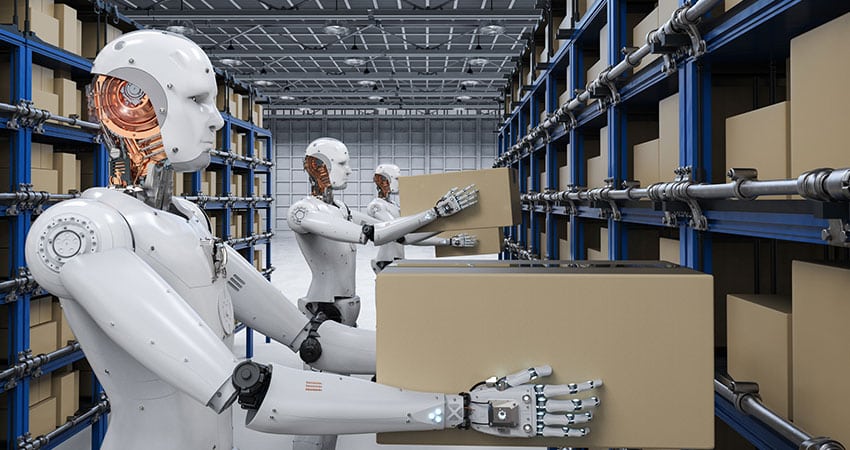While there are some concerns about robots replacing humans and taking their jobs, with U.S. unemployment at about 3.6% ecommerce companies are struggling to find enough workers and more are seeing robotics as a way to close the gap.
Chris Elliott, a consulting manager with ecommerce consulting and software provider Blue Horseshoe, said he’s seeing companies that aren’t looking for robots and automation to replace people but just to fill positions that are unfillable.
“It comes down to, either you can’t find enough people to fill your positions, or you need a flexible labor force for seasonality, and robots can help you meet your labor requirement,” he said. “When we do analysis for our customers, the requirement for a work area might be 2.5 full-time equivalents, and you want the bot to be that .5, so you don’t have to hire a third person.”
A lot of companies are having a hard time with staffing, and turnover is high, said Robert Escobar, founder and principal of omnichannel supply chain and logistics consultancy Camino Real Group.
“Everyone is being super creative in keeping their teams together,” said Escobar, who previously worked in ecommerce for Gwinnie Bee and Roxbox. “I talked to a guy who has three different temp agencies this year, and he’s already getting nervous about the holidays, with bodies being so scarce. Workers having so many choices, they often leave and get another job. That’s why they’re motivated to put in more automation.”
Fergal Glynn, vice president of marketing at fulfillment automation provider 6 River Systems, said a fulfillment system built on co-bots not only allows companies to keep their current workers, it also opens up opportunities to hire workers who were excluded in the past. For instance, a picker’s job might require them to walk 10 or more miles a day in a more manual process, but with robots in place that’s reduced to about three miles a day, making it less physically taxing.
“It also opens you up to consider others you hadn’t in the past,” he said. “If someone is not able to read or write English, they couldn’t handle paper picking. But with a robot-directed system, they’re shown a picture of the item, the color and the number. It opens up a whole new pool of available workers.”
Brian Barry, president of operations and fulfillment consultancy F. Curtis Barry & Co., said the economics of implementing robotics in terms of labor costs and availability are shifting rapidly, meaning more ecommerce companies should give it serious consideration.
“There are typically two major costs to warehouse robotics you need to consider: Implementation and the monthly system lease,” Barry said. “We’ve seen from early adopters that once the fully-loaded hourly labor cost reaches $15 to $16, robotics can be cost justified. They work longer without needing breaks and can run from 12 to 14 hours on a charge. As labor availability becomes tighter and wages push up, more companies will find a profitable application.”
To find out more about trends in ecommerce fulfillment center robotics, you can read our new report on the subject by clicking here.

